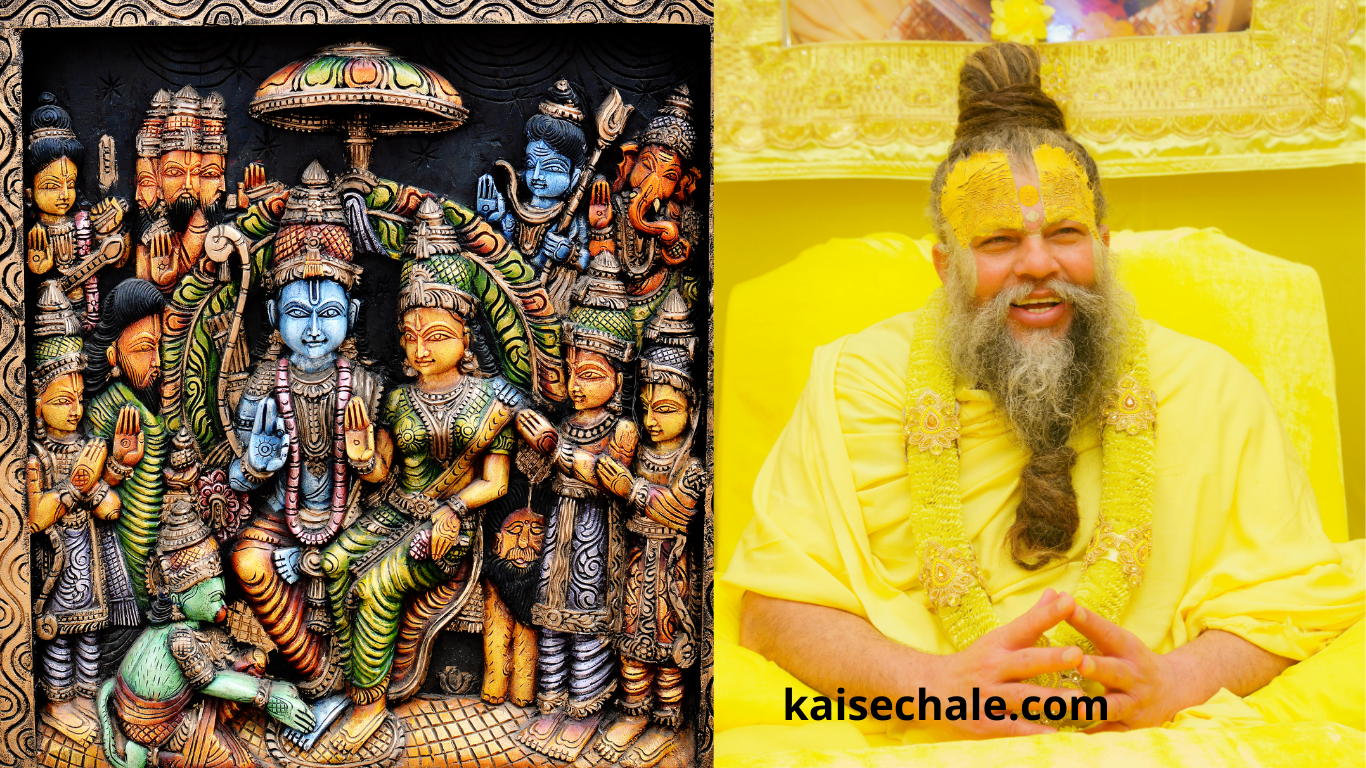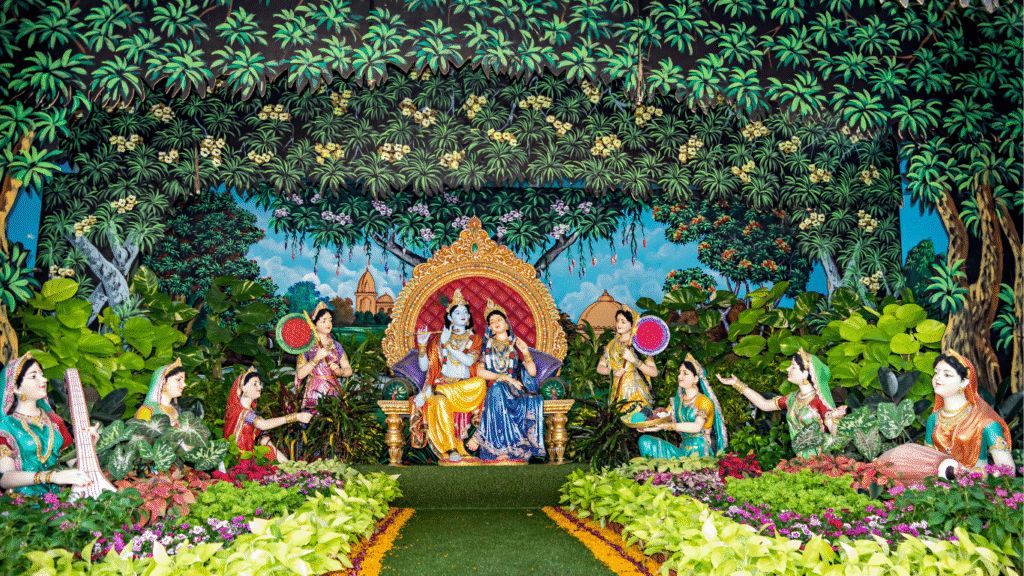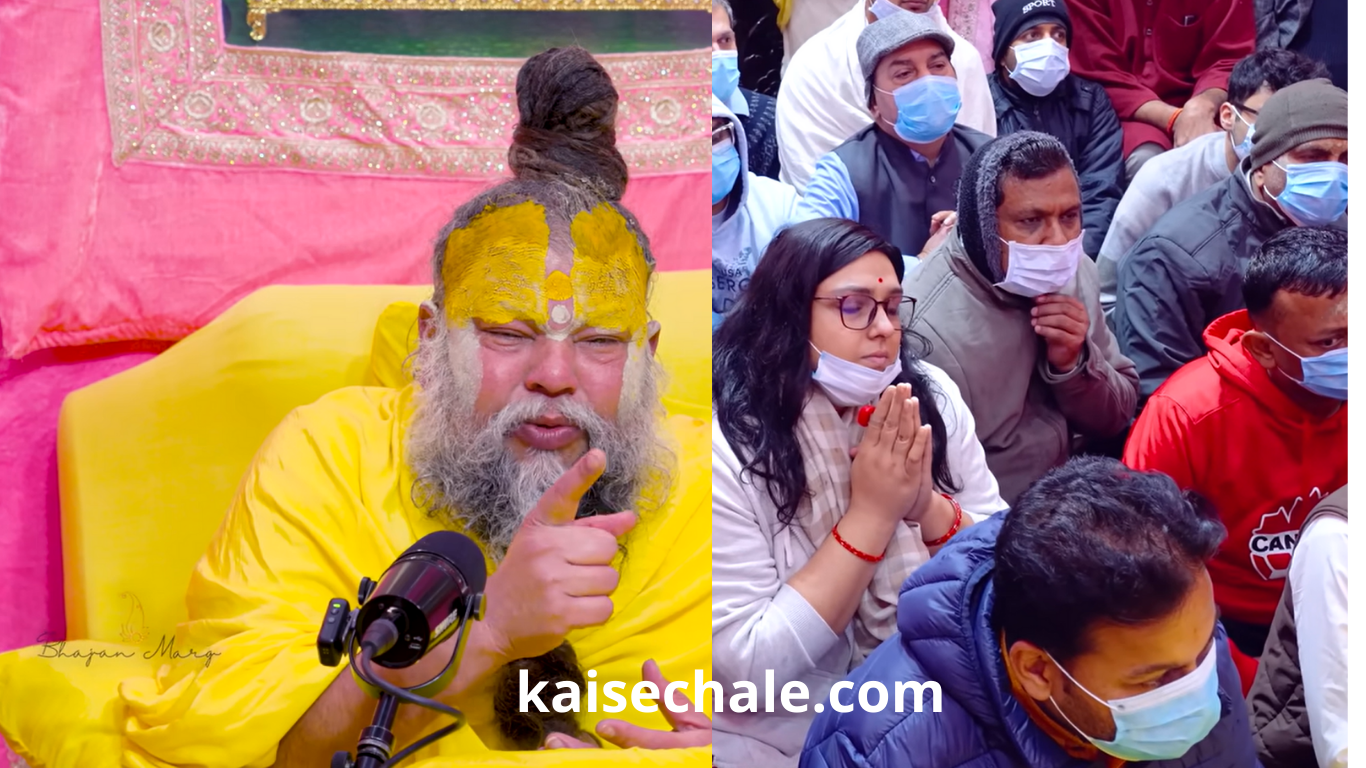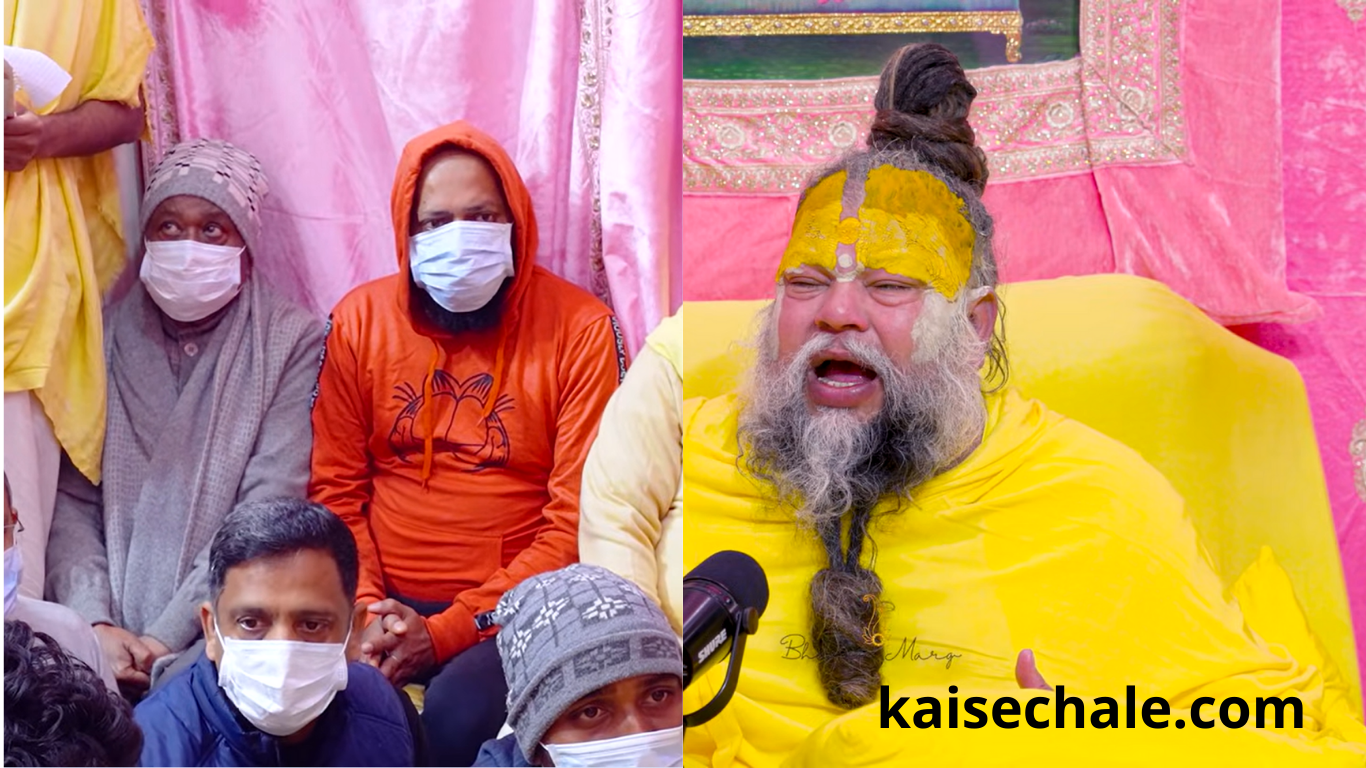
महाराज जी ने बताया असली सच
प्रस्तावना
रामायण का एक अत्यंत भावुक और चर्चित प्रसंग माता सीता का वन-गमन है। हमने अभी तक यही सुना है कि अयोध्या के एक साधारण धोबी द्वारा उठाया गया प्रश्न माता सीता की पतिव्रता पर शक को जन्म देता है, जिसे सुनकर भगवान श्री राम ने माता सीता का परित्याग करने का निर्णय लिया। इस घटना को लेकर सामान्य जनमानस में अनेक प्रश्न हैं और आलोचनाएँ उठती हैं। महाराज जी ने अपने प्रवचन में इस लीला का वास्तविक पक्ष और गहन आध्यात्मिक अर्थ विस्तार से समझाया है।
मुख्य बिंदु (Points)
- शरणागत वत्सलता और भगवत लीला
महाराज जी बताते हैं कि भगवान श्री राम सच्चे मायने में शरणागत वत्सल हैं। वे अपने भक्तों की रक्षा करते हैं और उनका कभी अनादर नहीं करते। माता सीता का वन-गमन वास्तव में समाज के लोकापवाद और अपने वंश, परिकर के अहंकार की निवृत्ति के लिए लीला रूप में हुआ। महाराज जी स्पष्ट करते हैं कि यह भगवान की उच्चतर लीला थी, जिसमें बाहरी तौर पर देखे जाने वाले क्रियाकलाप की तुलना में आंतरिक उद्देश्यों की प्रधानता थी। - अयोध्यावासी का प्रश्न और राम का निर्णय
भगवान श्री राम ने अयोध्या वासी की बात सीधा अपने कानों से सुनी, जिसमें उसकी पत्नी उसपर विश्वास नहीं करती थी – “रात भर पराए घर में रह आई है”। भगवान जानते थे लोकापवाद का प्रभाव कितना गहरा होता है। उन्होंने सीता को वन भेजने का निर्णय समाज के विश्वास के आधार पर लिया, न कि अपने व्यक्तिगत संबंध के कारण। महाराज जी बताते हैं कि भगवान अपने भक्तों का अभिमान नहीं रहने देते और कथा में यह प्रसंग उसी का उदाहरण है। - अहंकार मर्दन की लीला
सीता जी का वन-गमन पूरी तरह भगवान के परिकर – वानर, परिजन, अयोध्यावासियों – के अहंकार के नाश के लिए किया गया। राम-परिकर के अनेक पात्र लंका जीतने, रावण के वध और अन्य उपलब्धियों से गर्वित हो गए थे। इस गर्व का नाश कराने के लिए भगवान ने ऐसी स्थिति बनाई। वन भेजना सीता जी की पवित्रता पर प्रश्न नहीं था, बल्कि सभी के अहंकार का भंजन करना था – जिसके बिना कोई आध्यात्मिक प्रगति संभव नहीं है। - ऋषि परंपरा और शिक्षा
माता सीता वन में वाल्मीकि आश्रम जाती हैं। महाराज जी स्पष्ट करते हैं कि उस समय की प्राचीन परंपरा थी कि ऋषि-मुनि ही बच्चों को शिक्षा, संस्कार, दीक्षा देते थे। सीता जी गर्भवती थीं और उनके पुत्रों – लव और कुश – को ऋषि वाल्मीकि के संरक्षण में श्रेष्ठ शिक्षा प्राप्त हुई। यह भी श्री राम की लीला का ही हिस्सा था कि उनके पुत्र ऋषियों के मार्गदर्शन में बढ़ें और समाज तथा अयोध्या को अपना वास्तविक परिचय दें। भगवान् श्री राम जी ने खुद ऋषि विश्वमित्र जी के मार्गदर्शन में अपने बेटो जैसा जीवन व्यतीत किया था. - लव-कुश का प्रादुर्भाव
सीता जी के वन-गमन के बाद लव और कुश का जन्म हुआ। वे शास्त्र, धनुर्विद्या, वेदों और अन्य विद्याओं में पारंगत हुए और भगवान श्री राम के अश्वमेध यज्ञ के घोड़े को पकड़ने की लीला में अयोध्या के समस्त सैनिक, हनुमान सहित सभी को परास्त कर दिया। इस अद्भुत लीला से भगवान श्री राम और समस्त अयोध्यावासी सीता जी तथा उनके पुत्रों की अद्वितीय सामर्थ्य और पवित्रता को पहचान सके। - माता सीता का अंत, भगवान् श्री राम का रुदन
जब सीता जी पृथ्वी की गोद में लीन होती हैं, भगवान श्री राम अत्यंत विकल हो उठते हैं और रुदन करते हैं। महाराज जी कहते हैं कि यह शोक केवल स्त्री-प्रेम नहीं, आत्मिक प्रेम का चरम भाव था। सीता जी का परित्याग किन्हीं दोषों या समाज के दबाव के लिए नहीं, बल्कि भगवान की लीला का गूढ़ पक्ष था। - भगवान् श्री राम का दीर्घकालिक ब्रह्मचर्य
सीता जी के वन-गमन व पृथ्वी-प्रवेश के बाद श्री राम ने स्वयं 13,000 वर्षों तक अखंड ब्रह्मचर्य व्रत का पालन किया। उन्होंने समाज, अनुशासन और भगवत भक्तों का परिपालन करते हुए अपना जीवन व्यतीत किया। यह श्री राम के चरित्र का उच्चतम आदर्श था। - भगवत कथा का महत्व
महाराज जी की वाणी बताती है – केवल भगवान का चरित्र श्रवण, भगवत चर्चा, नाम-जप, संत समागम यही जीवन का सार है। लोकापवाद, साधारण जनमत, सामाजिक धारणाएं, सब भगवान की लीला के बाहरी पक्ष हैं, उनका अंतर्निहित उद्देश्य अपनी सीमाओं, अहंकारों का नाश करना और भगवत प्राप्ति प्राप्त करना है।
निष्कर्ष
महाराज जी के अनुसार, माता सीता का वन-गमन कोई साधारण सामाजिक घटना, स्त्री के सम्मान का अपमान या पुरुष-दंभ नहीं था। यह भगवान श्री राम की गूढ़ लीला का हिस्सा थी, जिसमें उन्होंने समय, समाज, अपने जनों के अहंकार का परिपाक, शिक्षा प्रणाली, और धर्म के उच्चतम आदर्श को स्थापित किया। सीता जी की पवित्रता कभी शक के घेरे में नहीं रही; श्री राम ने परित्याग का निर्णय लोकापवाद, समाज के विश्वास, और लीला-संपादन के लिए लिया – जिससे अंततः भगवत प्रेम और ज्ञान का प्रकाश समाज के हर अंग में फैल सके।
भगवान श्री राम के जीवन में सीता जी का स्थान अनमोल था – वे उनके लिए केवल पत्नी नहीं, बल्कि उनके हृदय का अभिन्न हिस्सा थीं। मां सीता का वन जाना, पुत्रों का जन्म, अयोध्या में उनकी लीला – ये सब घटनाएँ बाहरी दृष्टि से देखने पर कठोर लगती हैं, परंतु अध्यात्मिक रूप से ये लीला सर्वनाश, अहंकार-भंजन और भगवत प्राप्ति का मार्ग प्रशस्त करती हैं।
महाराज जी का यह प्रवचन समाज के लिए संदेश है कि जीवन के हर निर्णायक मोड़ पर, जब भी कोई कठिनाई या विरोध हो, हमें केवल बाहरी कारणों को नहीं देखना चाहिए। भगवान की लीला में गूढ़ आशय छिपा होता है, और सच्चा भक्त वही है जो अपने भीतर की सीमाओं, अहंकार, और मोह-माया को त्याग कर भगवत शरणागत हो जाता है।
English Article – Did Shri Ram Abandon Pregnant Sita? – Shri Hit Premanand Ji Maharaj’s Perspective
Introduction
One of the most emotional and debated episodes in the Ramayana is the “exile” (vanvaas) of Mata Sita, while pregnant with Luv and Kush. According to popular belief, this occurred after a citizen of Ayodhya questioned Sita’s chastity, leading Shri Ram to send her to the forest. Shri Hit Premanand Ji Maharaj, in his spiritual commentary, offers a deeper insight and spiritual explanation to this incident, beyond mere social or human logic.
Main Points
- The Principle of Shelter (Sharanagati) and Divine Play
Maharaj Ji emphasizes that Lord Ram is the epitome of compassion. The exile of Mata Sita was a part of a greater divine “Leela” intended to destroy the pride of his own followers and establish supreme humility. The incident was not about public accusation alone but part of an inner spiritual process that only a realized saint or Yogi can understand. - Ayodhya Citizen’s Question & Ram’s Decision
Lord Ram, disguised at night, overheard a conversation between a washerman and his wife. The husband doubted his wife due to her spending the night at someone else’s house, suspecting her chastity. Maharaj Ji explains that Ram’s decision was not personal but rooted in the public’s perception. This painful choice was about protecting “Maryada” (social order) while embodying detachment and sacrifice for higher values. - Humbling the Ego of Ram’s Associates
All of Ram’s companions and warriors became prideful after their conquest of Lanka and other victories. Ram realized that only a divine “Leela” could remove their egos. Maharaj Ji highlights that Sita’s exile was not about doubt but the destruction of ego, as spiritual progress cannot occur with pride. - Rishi Tradition and Education
Sita was pregnant and sent to the forest, not as punishment, but as part of the ancient tradition where Rishi-Munis educated royal children. Maharaj Ji clarifies that Luv and Kush were raised by Sage Valmiki, gaining deep knowledge and skills, and that this was also Shri Ram’s divine arrangement for them to grow spiritually. - Emergence of Luv and Kush
After Sita’s exile and birth of the twins, they became masters of scriptures and archery under Valmiki’s guidance. Their spiritual and martial prowess became apparent during Ram’s Ashwamedh Yagya, where they defeated Ram’s army and even tied Hanuman, making the entire Ayodhya recognize their true identity and purity. - Sita’s Earthly Departure and Ram’s Grief
When Sita returned to her mother, Earth (Prithvi), Ram could not hold back his grief and wept openly. Maharaj Ji presents Ram’s tears as the highest form of spiritual love, not out of personal sorrow. Sita’s purity was never actually questioned; the play was about higher spiritual lessons. - Ram’s Lifelong Celibacy
After Sita’s final departure, Ram pledged lifelong celibacy for 13,000 years, ruling Ayodhya according to dharma, discipline, and compassion. This upholds the ideal of renunciation and selfless devotion. - Importance of Listening to Divine Narratives
Maharaj Ji encourages that listening to Bhagvat katha (divine stories), chanting God’s name, and keeping good company are highest spiritual paths. The Sita exile incident teaches not to look only for superficial reasons, but seek deeper lessons of humility, surrender, and spiritual growth.
Conclusion
According to Shri Hit Premanand Ji Maharaj, Sita’s exile was not a simple story of social condemnation or male ego, but a deep divine play designed to break pride, foster spiritual wisdom, and establish humility. Sita’s purity remained unquestioned throughout – Ram’s painful decision was a test of humility, a lesson in detachment, and a way to inspire deeper faith among his followers.
Sita was not just the wife of Shri Ram, but his very heart. Her exile, the birth of her sons, and their victory in Ayodhya, all have a profound spiritual significance, teaching us about surrender, sacrifice, and the power of divine love. Shri Ram’s enduring celibacy and unwavering faith showed the world the highest ideals of dharma and devotion.
For seekers, this episode sends a message: do not judge divine actions only from a worldly perspective. Every decision of the Lord has a spiritual significance that is intended to destroy inner negativities and guide the soul towards liberation.







